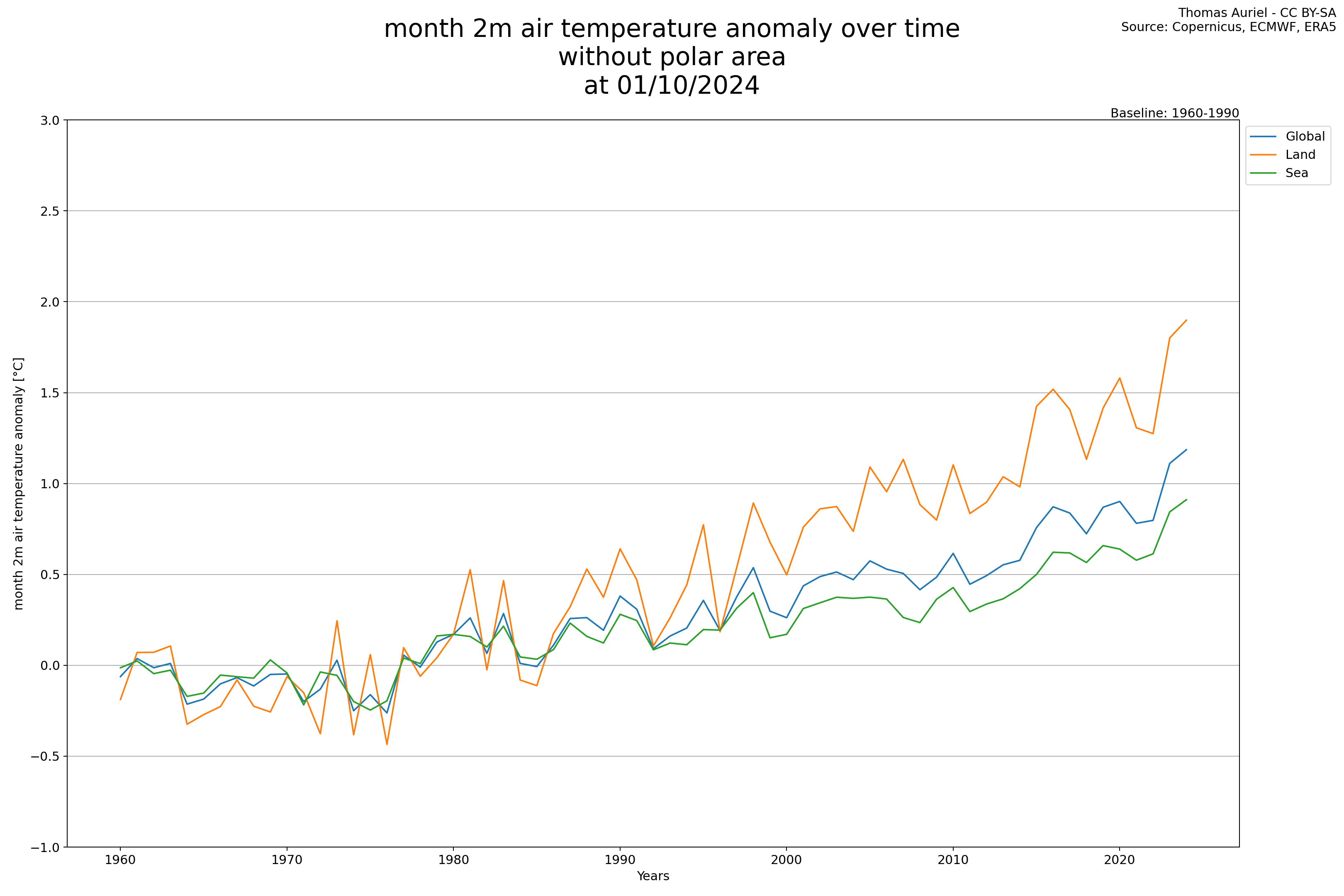Global Warming and Land-Ocean contrast
The physical difference between sea and land
A global view
In this article, we aim to explore the disparity between global and regional (land-ocean) temperature changes. Additionally, we will examine how these differences are reflected in news articles and public commentary.


The Earth’s climate is warming, but different components of the Earth system absorb and retain heat at varying rates. For example, the ocean absorbs and stores heat efficiently, thanks in part to the movement of moisture. As water evaporates from the ocean surface, the air above remains relatively cool. Additionally, the ocean’s heat transport mechanisms allow for the dissipation of heat across large areas, preventing excessive heat buildup. In contrast, land lacks these mechanisms, resulting in more pronounced temperature anomalies. This is why, on temperature maps, we observe higher anomalies over land than over the sea.
An interesting exception to this pattern occurs near the poles. Here, the anomalies don’t follow the same rules, a phenomenon known as polar amplification. However, this topic is beyond the scope of this post.

As of October 2024, the Earth anomaly has reached a level of 1.25°C. Please note that in this blog post, I will be comparing these values to the baseline 1960-1990. This is not the baseline used for the Paris agreement. The Paris agreement baseline consider the baseline before the industrial era. To provide context, it is essential to distinguish between this comparison and pre-industrial temperatures. Nevertheless, it is still possible to observe the behavior difference.
When considering the land and sea separately, a noticeable distinction becomes apparent. The temperature anomaly in the air above the ocean was limited to 1.0°C, whereas the land exhibited an anomaly close to 2.0°C.

It is also interesting to notice the high variability of the air temperature above land compared to the air temperature above sea.


Due to their distinct behavioral patterns, lands tend to heat up more quickly than oceans on average. The land accounts for approximately 30% of the Earth's surface, while the ocean covers around 70%. This disparity becomes evident in the temperature records.
Without polar areas
In the next graphs, the polar area was removed to isolate their effect from the data.


Clickbait title and Climate-skepticism
This is a source of confusion for media and the public:
- RFI - Europe is warming faster than anywhere else in the world, UN warns
- Climate Adaptation Platform - Report Shows Asia is Warming Faster Than Global Average
- Guardian - ’The science is irrefutable’: US warming faster than global average, says report
- Le Monde - Climate: Why France and Europe are warming faster than average
- Meteored - Latin America and the Caribbean warming faster than global average
- Newsweek - Russia's Climate Is Heating Up Faster Than the Rest of the World
- Popular Science - # Australia Is Heating Up Faster Than The Rest Of The World
- Etc.
All these headlines accurately report that certain areas are warming at a faster rate than the global average. However, upon closer examination, we often fail to uncover the underlying explanations in the articles, which can contribute to skepticism about climate science. The following blog post is a good example.
I’ll save the larger, and more important, conclusion that models, and those that create them, cannot be trusted for another day. Every Place On Earth Warming Faster Than Every Other Place On Earth – William M. Briggs
I don't know how this could be accuratly reported in the media and explained to the public. But avoiding this kind of headline could be a first step.
France must be ready for +4°C anomaly
Another point is that this difference of warming imply that land country will experience warming higher than Paris agreement want to target (1.5°C-2°C). For instance in France, government announced that France should prepare to a +4°C warming. Many activists understood that french government decided that the Paris agreement was no longer a target. This is not correct.


Continental France experience already +2°C compared to 1960-1990 (an even greater increase when compared to pre-industrial levels). The mitigation of the climate warming is obligation. Public politics may be not strong enough. But it is sure that countries must prepare to warmer climate and adapt.